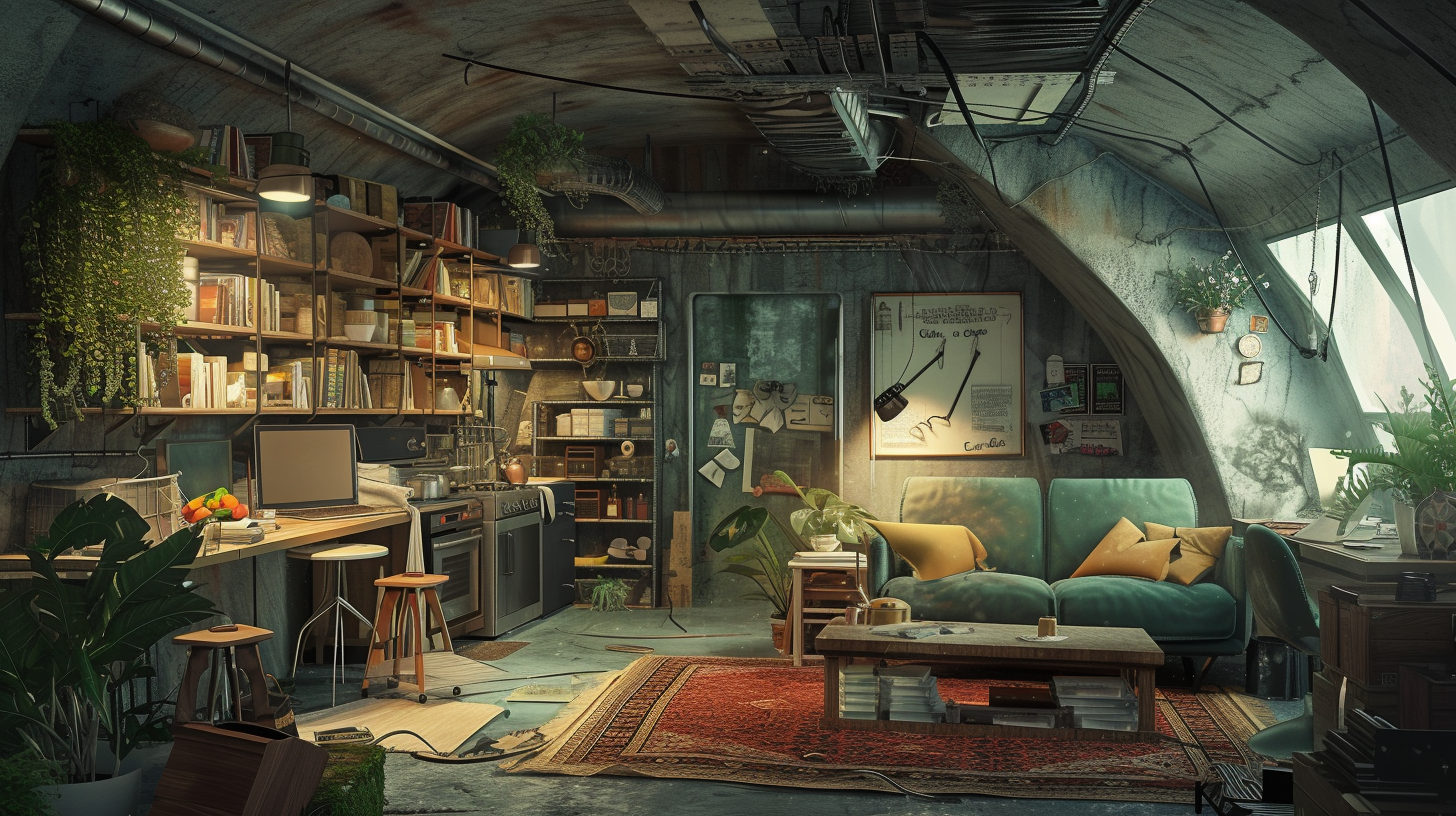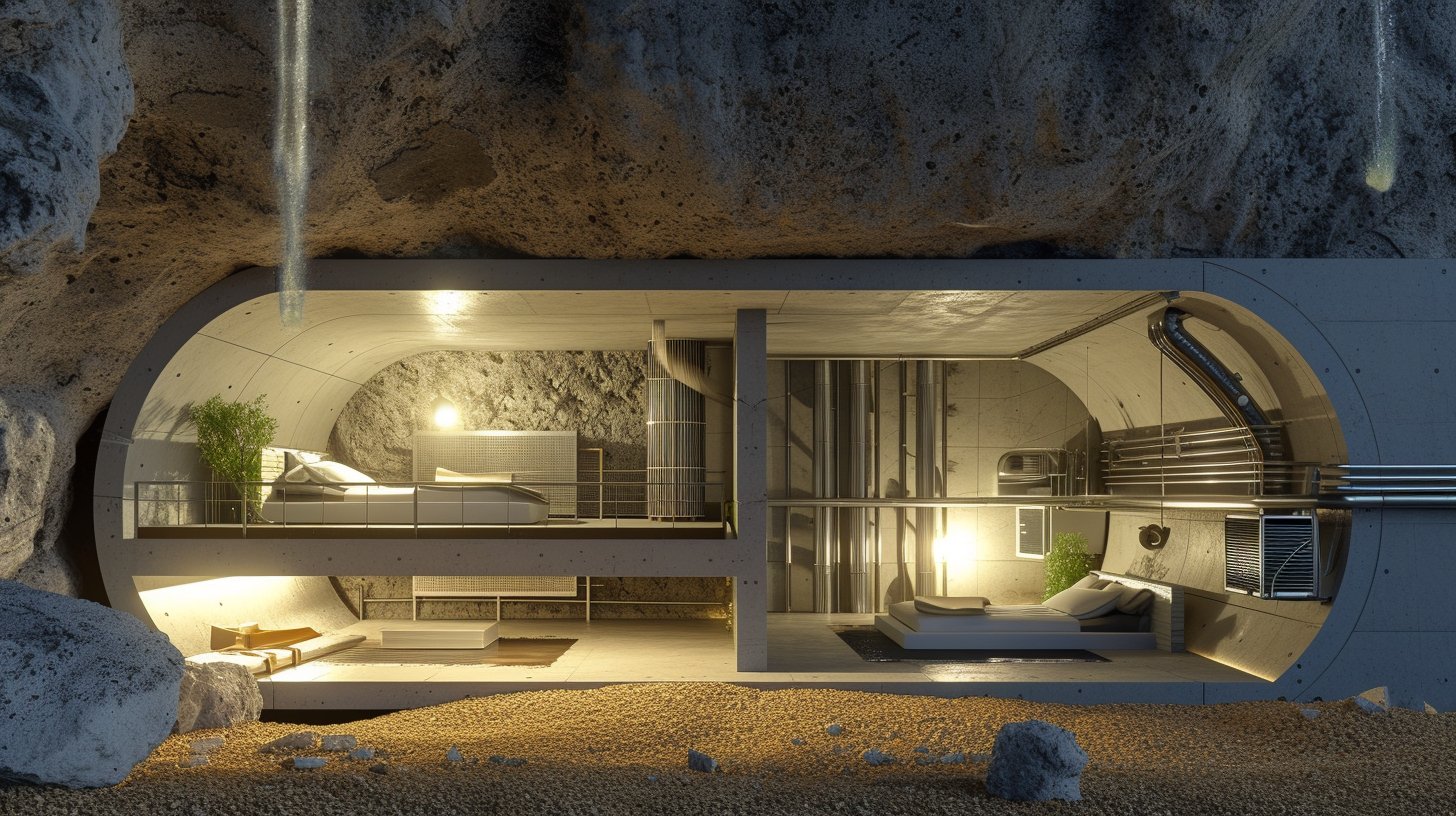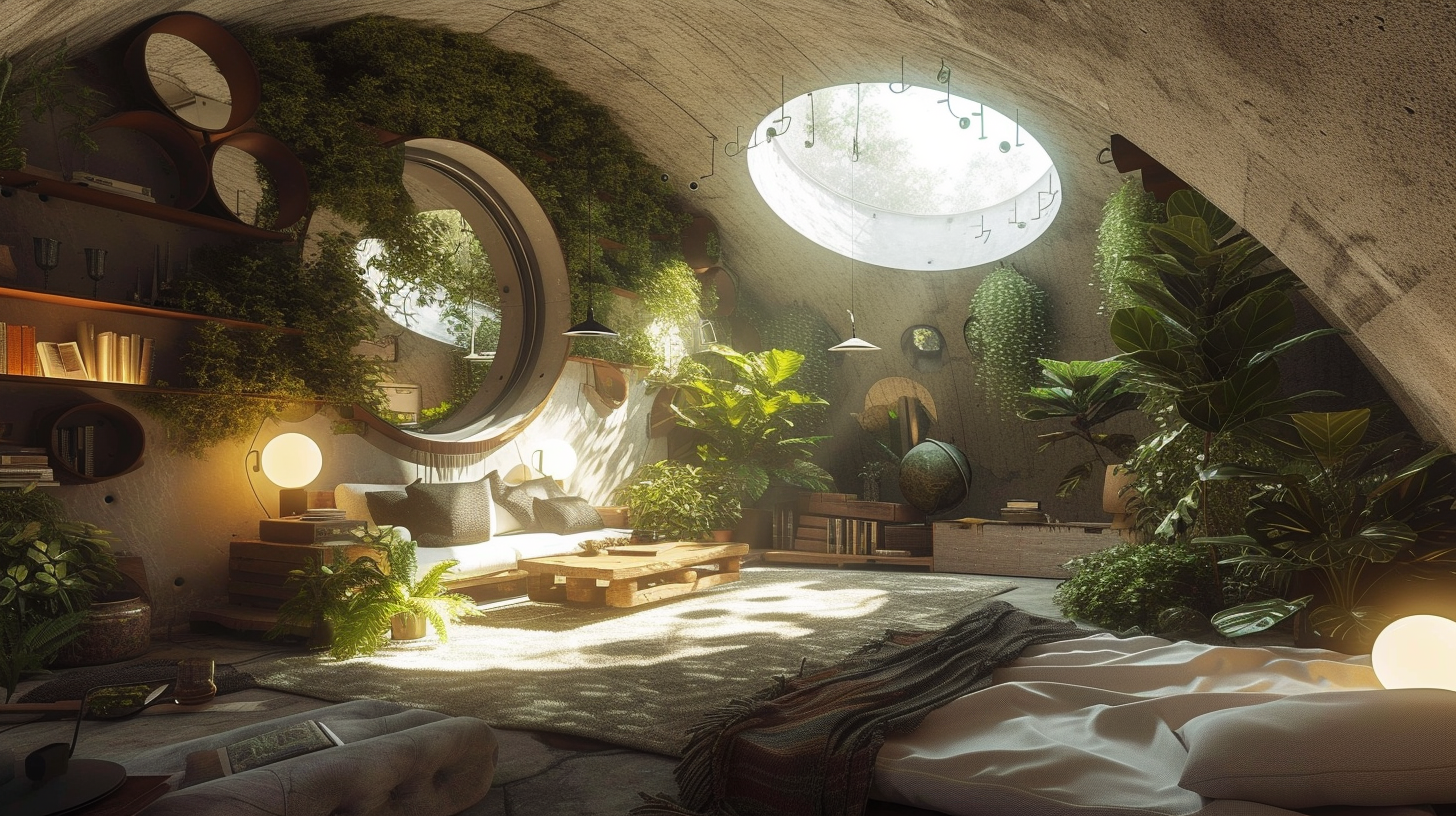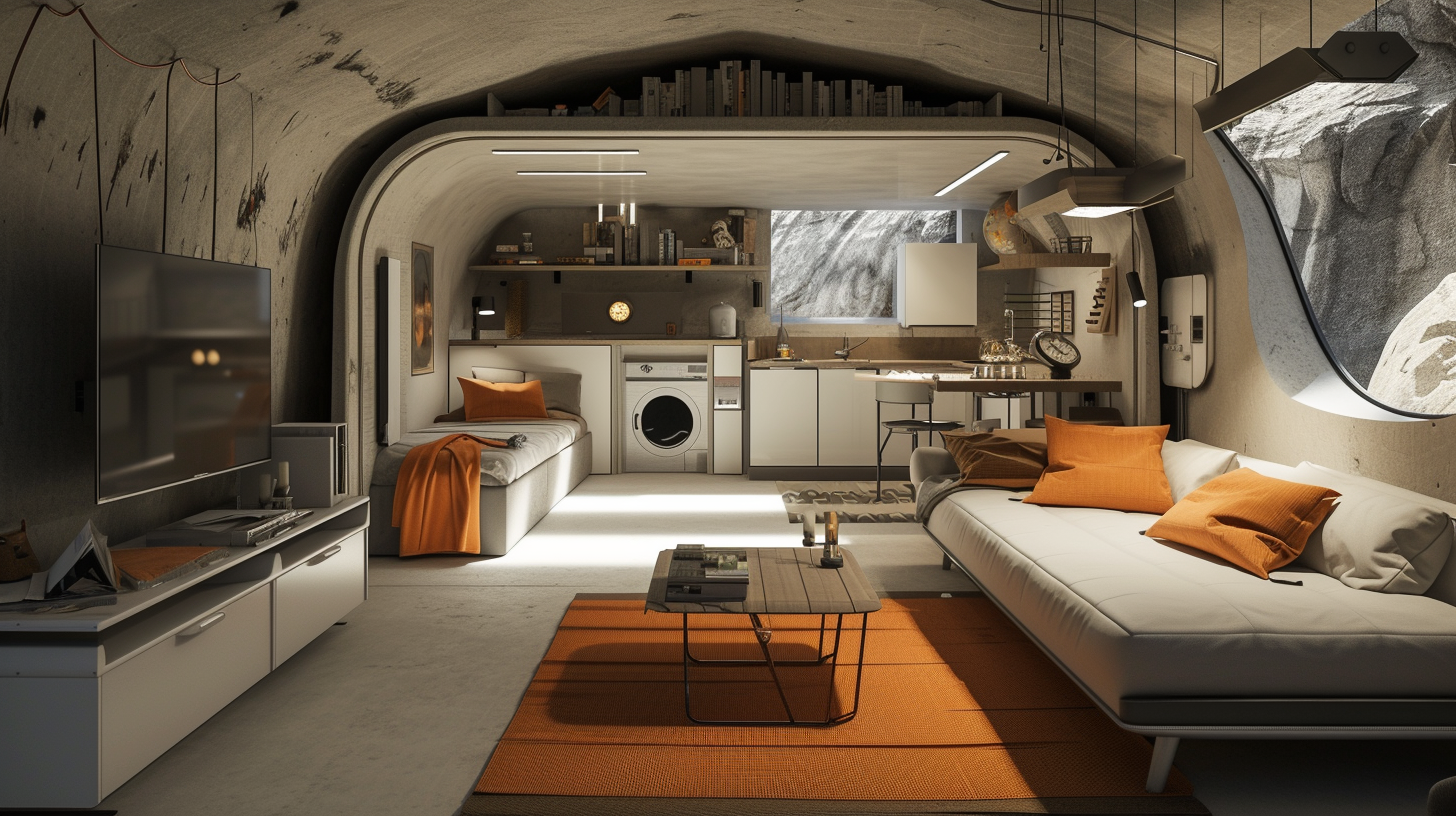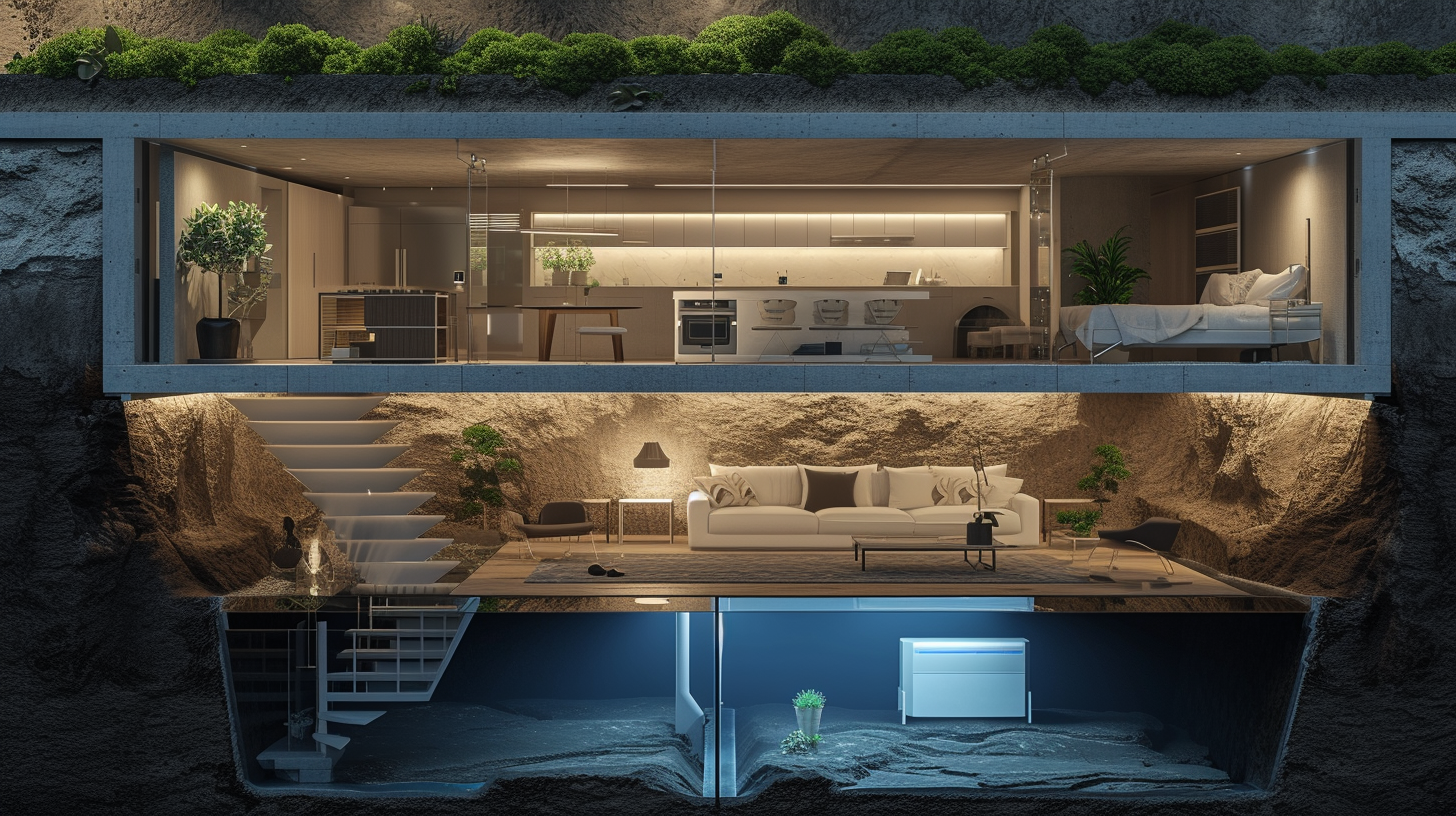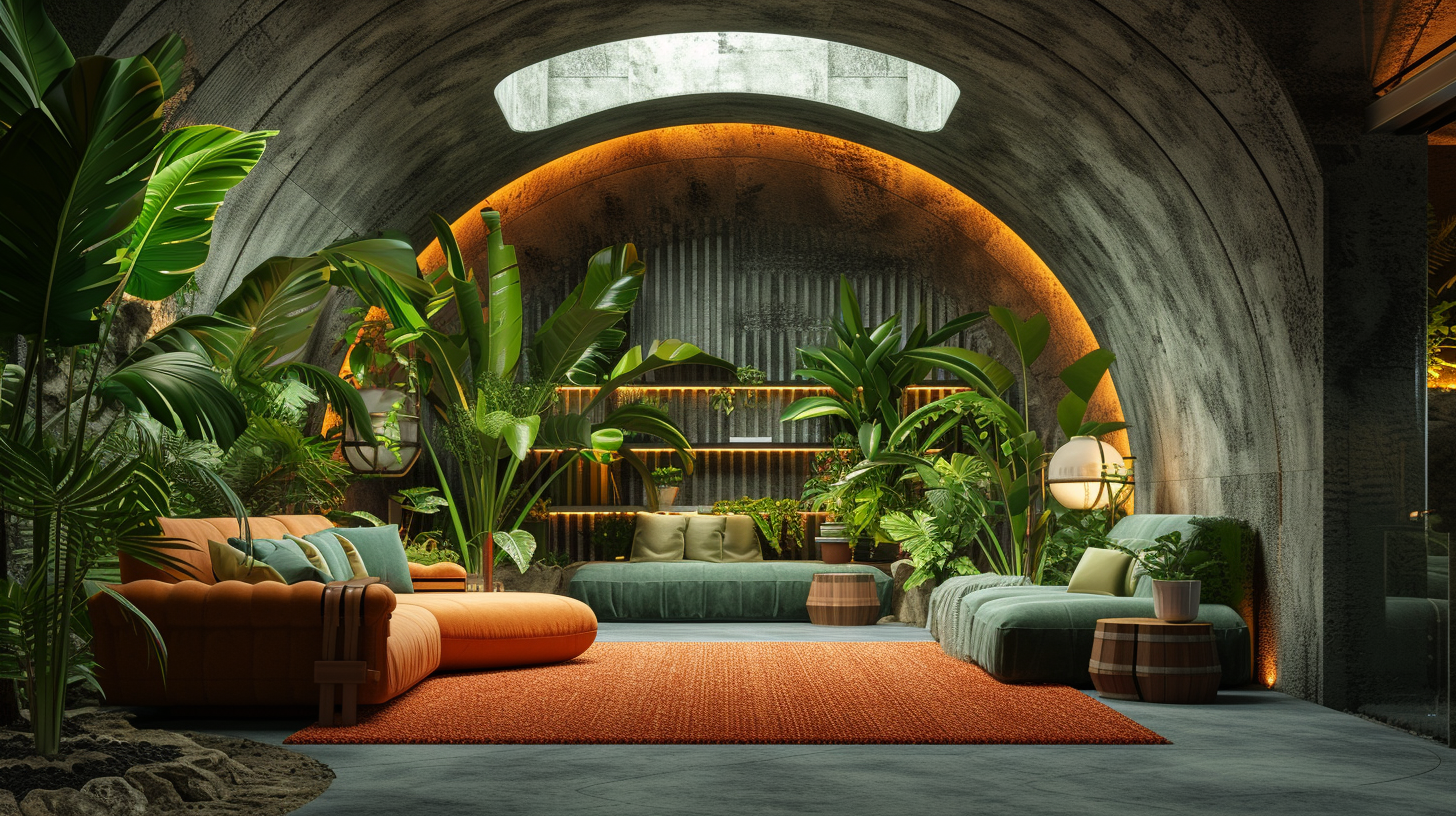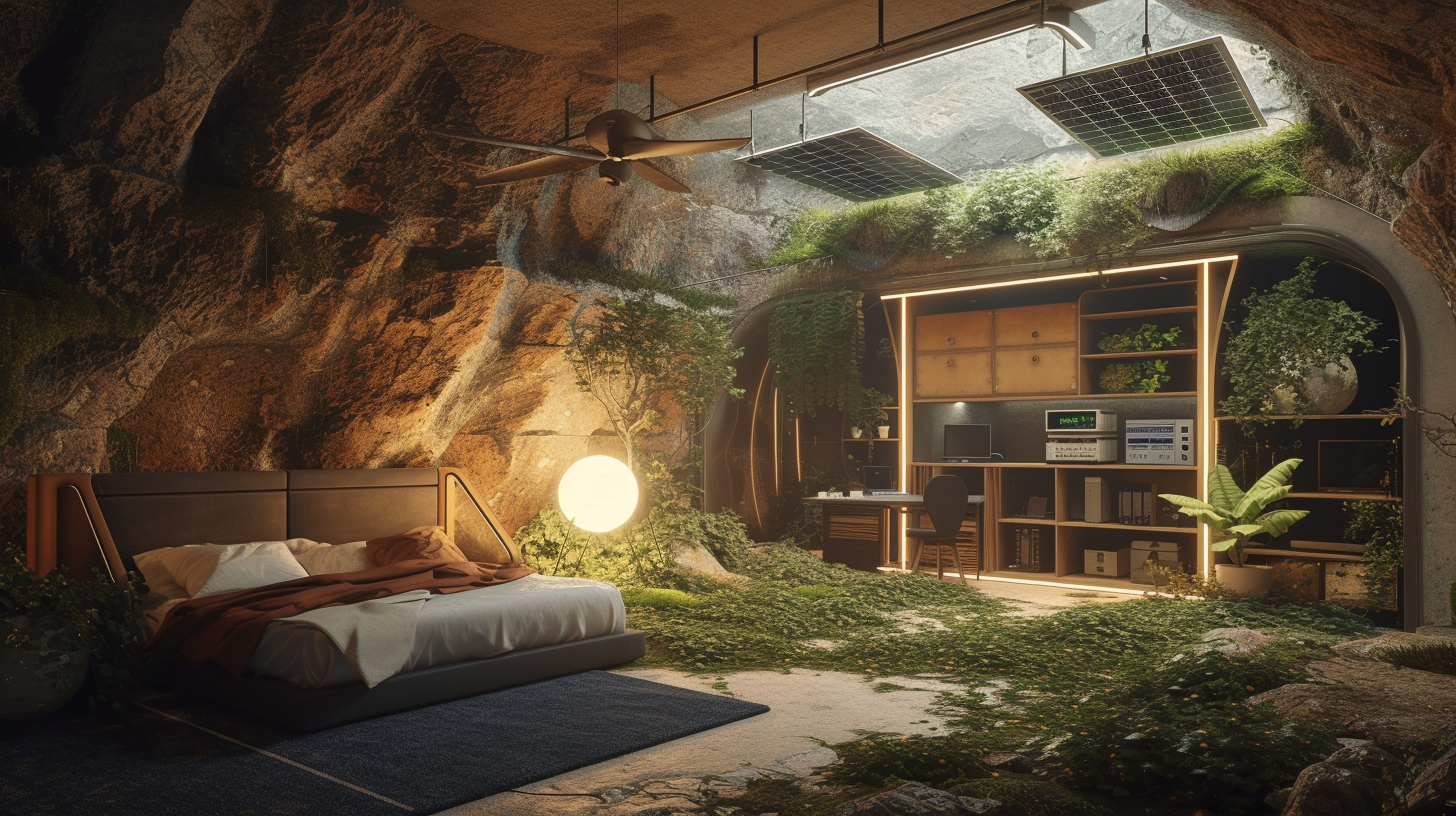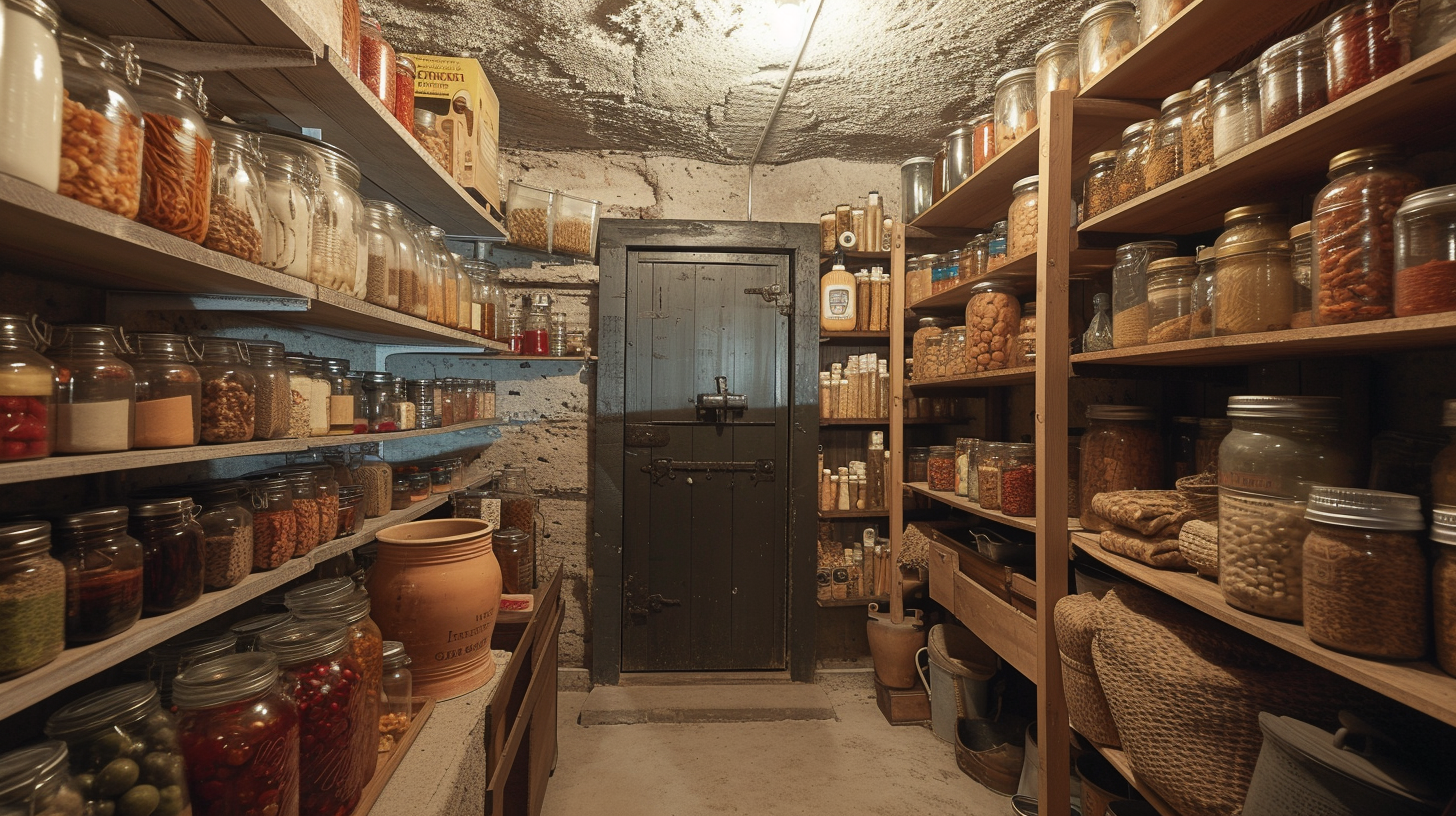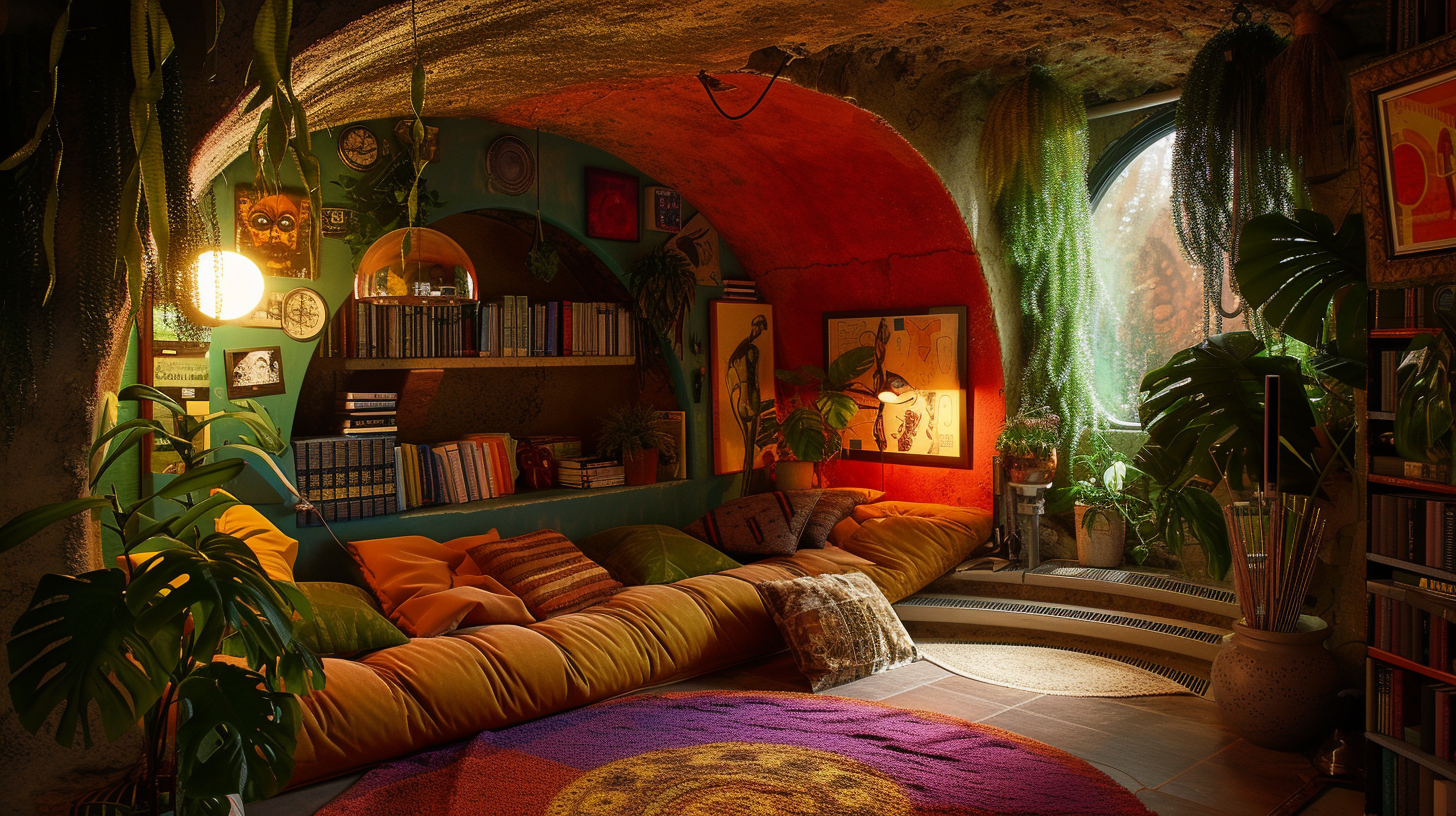Transforming your underground bunker into a cozy abode isn’t just about digging deep; it’s about carving out a space that reflects your personality and meets your living needs. As you embark on this journey, you’ll find that the keys to a livable bunker lie not only in the basics—like ensuring proper ventilation and moisture control—but also in the nuances that make a house a home.
Whether it’s optimizing natural light to brighten the depths or selecting space-saving furniture that doesn’t compromise on comfort, each decision you make plays a crucial role. Moreover, infusing your space with personal touches through decor can turn a cold, subterranean shell into a warm, inviting sanctuary.
But how do you strike the right balance between functional design and personal flair, especially in a space that comes with its own set of unique challenges? Stick around to uncover strategies that will help you navigate these waters, ensuring your underground haven is not only sustainable but also truly yours.
Key Takeaways
- Proper ventilation is crucial for bunker livability. Assess ventilation needs, install air intake and exhaust pipes, use air pumps, and consider emergency ventilation methods.
- Bring in natural light by installing skylights, sun tubes, and strategically positioning windows. Use light colors on walls and ceilings, place mirrors strategically, and consider solar-powered lighting as a backup.
- Utilize space-saving furniture and convertible units such as modular furniture, wall-mounted furniture, foldable tables, collapsible chairs, and built-in storage solutions.
- Maximize vertical storage space with bunk beds, loft beds, storage ottomans, stackable containers, wall-mounted shelves, and hanging organizers.
Assessing Ventilation Needs
To ensure your underground bunker remains habitable, you’ll need to carefully assess your ventilation needs based on its size and how many people will be using it. The air inside must be constantly refreshed to prevent staleness and the build-up of harmful gases. This is where an effective air filtration system comes into play.
You’ll need to consider installing air intake and exhaust pipes, preferably made from PVC pipe due to its durability and resistance to corrosion, at opposite ends of the shelter to promote proper airflow.
Additionally, an air pump is essential for removing stale air and introducing fresh air, ensuring a continuous supply of clean air. This will help maintain air quality, especially during extended periods of occupancy. The type of ventilation system you choose must align with the bunker’s capacity to guarantee it meets your air filtration needs without fail.
In planning, don’t overlook the possibility of power failures or compromised systems. Having emergency ventilation methods in place, such as manual air pumps or backup filtration systems, can be lifesaving. Remember, the effectiveness of your bunker’s ventilation directly impacts its livability, making thorough planning and implementation of your ventilation needs crucial.
Optimizing Natural Light
After ensuring your bunker has proper ventilation, it’s crucial to focus on how you’ll introduce and optimize natural light to create a more livable space. Maximizing natural light not only makes your underground shelter more pleasant but also reduces the need for artificial lighting during the day, conserving energy and resources.
Here’s how you can achieve this:
- Install Skylights or Sun Tubes: These are excellent for bringing natural light into your fallout shelter. Check with your local building department for regulations regarding modifications to structures made of brick or concrete.
- Position for Sunlight: When planning your bunker, consider its orientation. Position windows or light wells in a way that captures the most sunlight throughout the day.
- Use Light-Colored Paint: Painting walls and ceilings with light colors can significantly amplify the natural light that enters your space. This trick makes your underground shelter feel larger and more welcoming.
- Strategically Place Mirrors: Mirrors can bounce light into darker corners of your bunker, ensuring that natural light reaches more areas.
Additionally, consider using solar-powered lighting as a backup for times when natural light is insufficient.
Space-Saving Furniture Ideas
In your quest to maximize space in your underground bunker, integrating modular furniture solutions can be a game-changer. Convertible units innovations allow you to swiftly transform your living area to meet different needs, from dining to sleeping, with minimal effort.
Vertical storage strategies, meanwhile, enable you to utilize every inch of your bunker’s height, keeping floor space clear and your living quarters organized.
Modular Furniture Solutions
Maximize your bunker’s living space by utilizing modular furniture solutions, designed to offer both functionality and flexibility in tight quarters. With the limited area inside underground bunkers, every square foot counts.
Here’s how you can make the most of your space:
- Opt for wall-mounted furniture that frees up floor space, providing more room for movement and other furniture pieces.
- Choose foldable tables and collapsible chairs that can be easily stored away when not in use, maximizing the area available for other activities.
- Invest in multi-functional pieces that serve more than one purpose, such as a sofa that turns into a bed for four people, ensuring comfort without sacrificing space.
- Explore vertical storage solutions that take advantage of the bunker’s height, keeping your living space organized and clutter-free.
Convertible Units Innovations
Embrace the latest in convertible units innovation, transforming your underground bunker into a versatile living space with furniture that saves space and serves multiple purposes.
Install Murphy beds and foldable tables to maximize your area, ensuring every inch is utilized efficiently. Consider modular furniture, easily rearranged to fit your changing needs.
Don’t overlook built-in storage solutions, such as under-bed drawers and wall-mounted cabinets, which are crucial for keeping your space organized. Additionally, explore sofa beds and nesting tables to further optimize your bunker.
Make sure to look for innovative designs like expandable dining tables and multifunctional ottomans. These convertible units innovations are exactly what you need to know to make your underground bunker both comfortable and functional.
Vertical Storage Strategies
Leveraging vertical space through wall-mounted shelves and hanging organizers can dramatically transform your underground bunker’s functionality and appearance.
In your bomb shelter, it’s essential to keep it simple and choose the best vertical storage strategies. Here are a few ideas:
- Install multi-functional furniture, like foldable tables and convertible sofas, to save precious floor space.
- Use bunk beds or loft beds to maximize sleeping areas vertically, freeing up more living space.
- Opt for storage ottomans or benches that provide seating and a place to stash your items.
- Stack compact storage containers, covered with durable plastic sheeting, to organize supplies efficiently.
Moisture Control Strategies
Now that you’ve considered space-saving furniture for your bunker, it’s crucial to tackle moisture control.
You’ll need to understand effective dehumidification methods and waterproofing techniques to keep your space dry and comfortable.
These strategies are key to preventing mold growth and ensuring the longevity of your underground haven.
Effective Dehumidification Methods
To make your underground bunker livable, it’s crucial to employ effective dehumidification methods to control moisture. Given its proximity to the water table, your bunker can feel more like a swimming pool than a home without proper moisture management. Here are four strategies to keep your space dry:
- Use desiccant dehumidifiers to absorb moisture from the air efficiently.
- Implement a ventilation system paired with a dehumidifier to maintain dry, fresh air.
- Install a sump pump to handle excess water, especially important if your bunker is near a high water table or prone to flooding.
- Place silica gel packets in confined spaces, like near a composting toilet, to absorb lingering moisture.
Waterproofing Techniques
After exploring how to effectively remove moisture, it’s essential to examine waterproofing techniques that prevent water from entering your underground bunker in the first place. When you build an underground haven, especially in preparation for events like nuclear fallout, you need to stay dry and have clean water on hand. Utilizing waterproof materials, proper drainage, and water-resistant sealants are key.
| Technique | Application | Benefit |
|---|---|---|
| Waterproof Materials | Walls & Floors | Prevents moisture infiltration |
| Drainage Systems | Around the Bunker | Keeps bunker dry |
| Ventilation | Throughout the Bunker | Controls humidity levels |
These strategies ensure your bunker remains a livable, moisture-free environment. Regular maintenance is crucial to keep these defenses up to par.
Customizing Comfortable Living Areas
When customizing comfortable living areas in your underground bunker, begin by designing a house with a crawlspace for optimal access and ventilation. This approach not only ensures a steady airflow but also provides easy access for maintenance and upgrades without major disruptions to your living space.
To enhance the comfort and functionality of your bunker, consider the following:
- Energy Efficiency: Utilize the warmth from a wood burner for your workshop and other areas. Incorporating energy-efficient solutions can help maintain a comfortable temperature in your dining room and other living spaces without excessive costs.
- Safety Measures: Reinforce your bunker’s stability by consulting soil tests and employing reinforcement methods. Digging alongside the footer and pouring a 2-foot high concrete wall with rebar can add significant stability. These shear walls are crucial for your bunker’s longevity and safety.
- Professional Consultation: Always consult with your local building department and engineers. Their approval is essential, and their expertise can guide you in implementing the best practices for a secure and livable underground home.
- Essentials Storage: Allocate space for storing essentials like bottled water and a first aid kit. In an emergency, having these supplies within reach can be lifesaving.
Ensuring Reliable Power Sources
Having considered the structural and comfort aspects of your underground bunker, it’s crucial to focus on ensuring a reliable power source to maintain these features effectively. In the wake of a nuclear attack or any emergency, having your own set of reliable power sources transforms your underground bunker into a truly livable home.
| Power Source | Benefits | Considerations |
|---|---|---|
| Solar Panels | Renewable, low maintenance | Needs sunlight, initial cost |
| Wind Turbines | Works day and night, renewable | Requires wind, space for installation |
| Backup Generators | Immediate power, reliable in emergencies | Requires fuel, regular maintenance |
To ensure continuous electricity supply, pair these power sources with a battery bank. This way, you’ll store excess power for times when sunlight or wind is low. Make sure you’re regularly maintaining and servicing your power sources to keep them in top shape, ready for any emergency. Investing in energy-efficient appliances and LED lighting will help minimize power consumption, extending the lifespan of your power sources and making your underground bunker a safer, more sustainable livable home.
Water Storage and Purification
To ensure your survival in an underground bunker, it’s crucial to implement effective water storage and purification systems. You need a reliable and sufficient water supply, and making sure your water is safe for consumption is just as important. Here’s how you can make it happen:
- Implement Water Storage Systems: Ensure you have enough room for large containers to store water for every person inside. This is essential for maintaining a long-term supply.
- Utilize Water Purification Methods: Incorporate methods like filtration, boiling, and chemical treatments to make collected water safe. Each method has its advantages, and using a combination can be most effective.
- Install a Rainwater Collection System: This can significantly supplement your water resources, especially during the rainy season. Make sure to filter and purify rainwater before use.
- Consider a Well or Underground Water Source: For long-term sustainability, having access to a well or an underground source can be invaluable. It requires more investment but ensures a steady supply.
Food Storage Solutions
After securing your water supply and purification systems, it’s crucial to focus on food storage solutions to ensure your underground bunker is fully prepared for long-term sustainability.
You’ll need to make sure you have enough supplies to last each person at least two weeks, but aiming for more is always wise.
Start by utilizing vacuum-sealed bags to preserve different types of food for extended periods. These are perfect for meats, fruits, and vegetables, significantly extending their shelf life.
Additionally, invest in airtight containers for your dry goods. These containers protect staples like rice, pasta, and flour from moisture and pests, ensuring they remain usable for as long as possible.
A designated pantry area is essential for storing canned goods and other non-perishable items. These food storage solutions are vital for maintaining a diverse and nutritious diet.
Also, consider adding freeze-dried and dehydrated foods to your storage. They offer a fantastic way to keep a variety of foods available without worrying about spoilage.
Personalizing With Decor
Transform your underground bunker into a welcoming oasis by personalizing it with decor that reflects your style and comforts. Making your underground shelter feel like a livable home requires more than just essential supplies and functional design; it needs the warmth and personality that only personal touches can provide.
Here are a few tips to guide you in personalizing with decor:
- Incorporate Personal Touches: Add artwork, photographs, and mementos that tell your story and remind you of the world above. These items transform a sterile space into a personal sanctuary.
- Choose Warm Colors: Select paint and fabric in warm and comforting colors. Shades of soft yellows, tranquil blues, and earthy greens can create a calming atmosphere that makes your bunker feel more inviting.
- Lighting and Ambiance: Utilize a mix of lighting fixtures and candles to add layers of light, enhancing the cozy feel of your space. Soft, adjustable lighting options can mimic natural light and help set the mood for relaxation.
- Functional Yet Stylish Furniture: Opt for furniture and textiles that serve dual purposes—functional for bunker living but also aesthetically pleasing. Comfortable seating, plush rugs, and decorative pillows add a homely touch while maintaining practicality.
Conclusion
Transforming your underground bunker into a cozy home is all about smart planning and personal touches. Make sure it’s well-ventilated, bathed in as much natural light as possible, and furnished with space-saving pieces. Tackle moisture head-on, and customize your living spaces for comfort. Reliable power, along with water and food storage solutions, are essentials.
Finally, inject your personality into the space with unique decor. With these steps, you’ll create a bunker that’s not just survivable, but truly livable.

